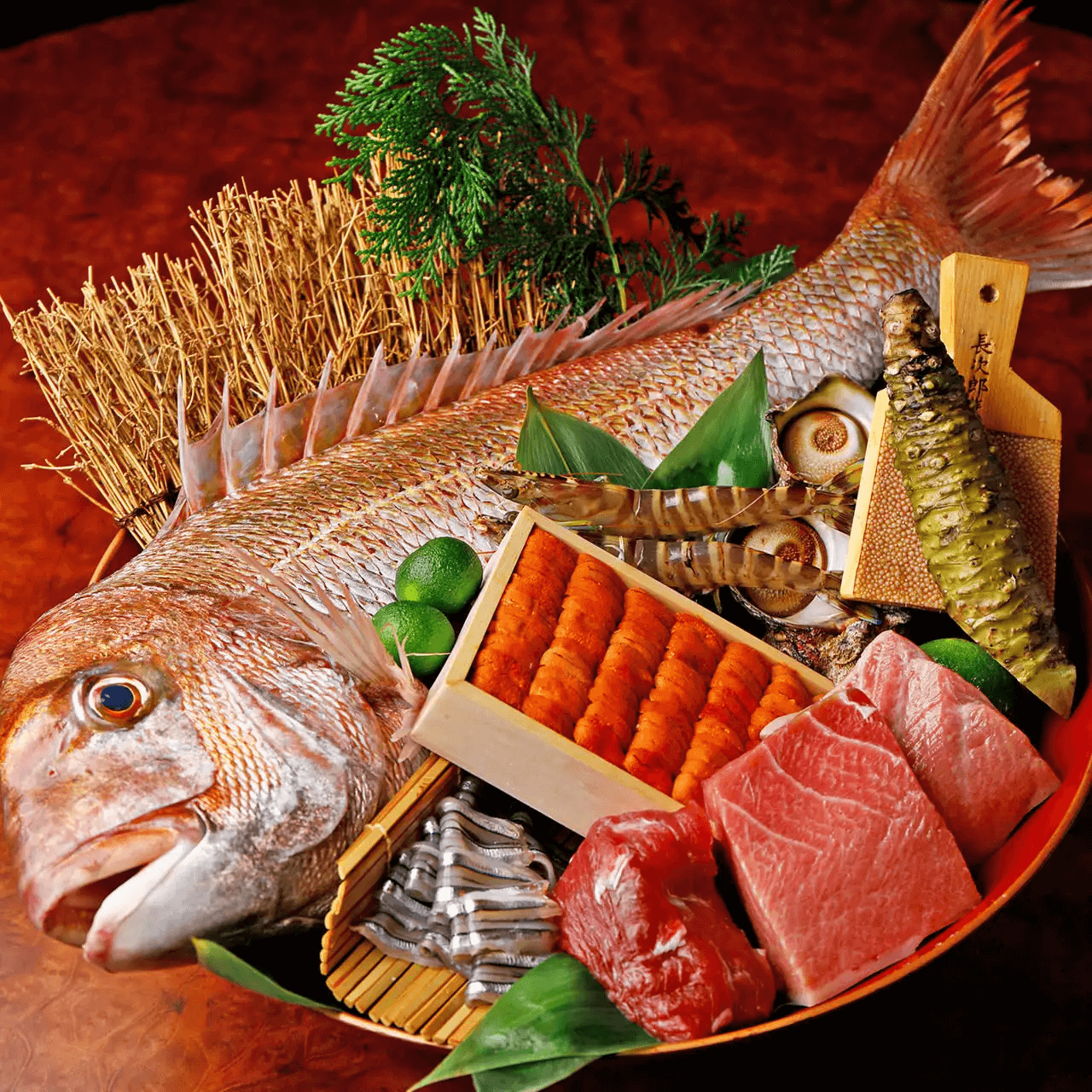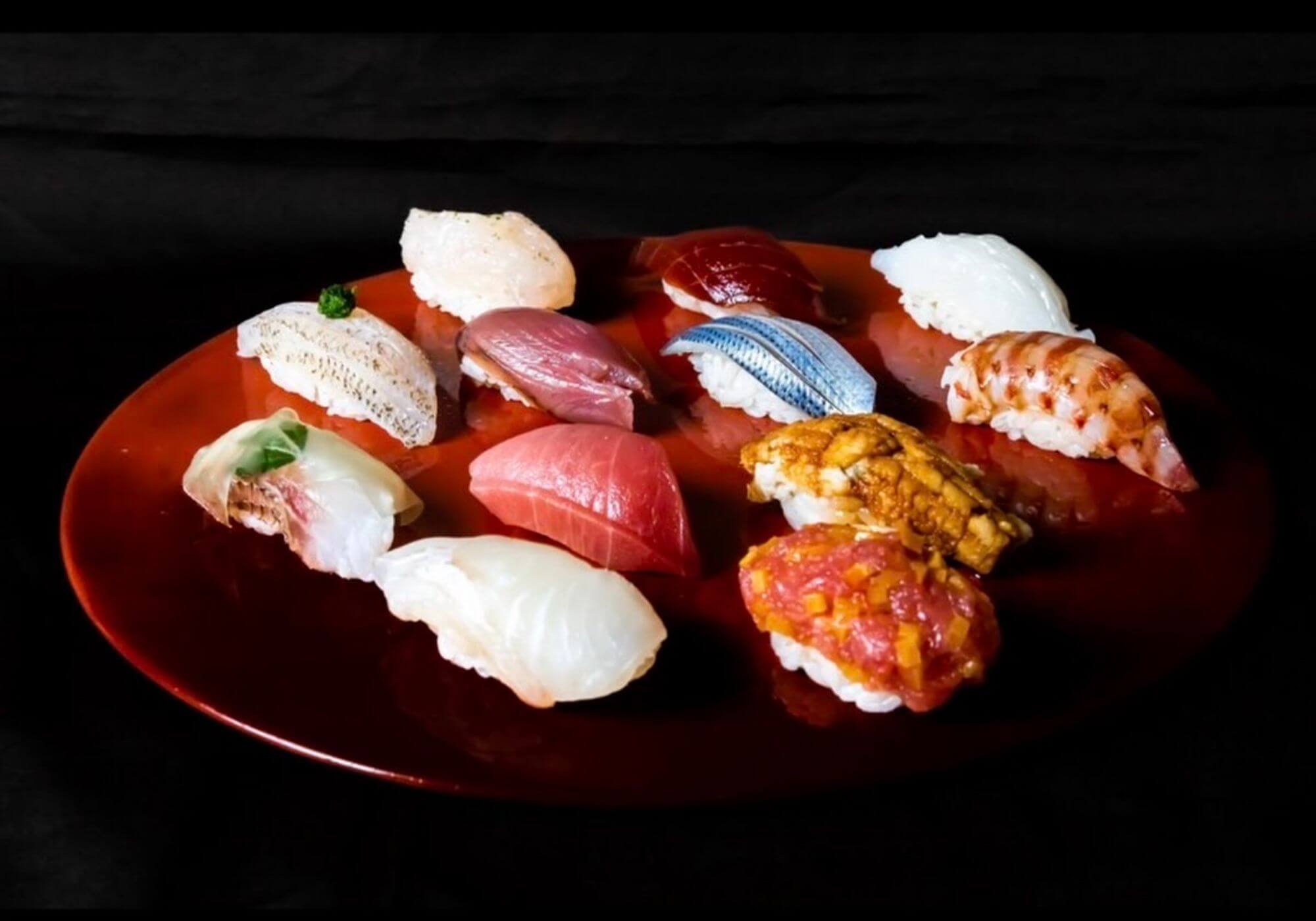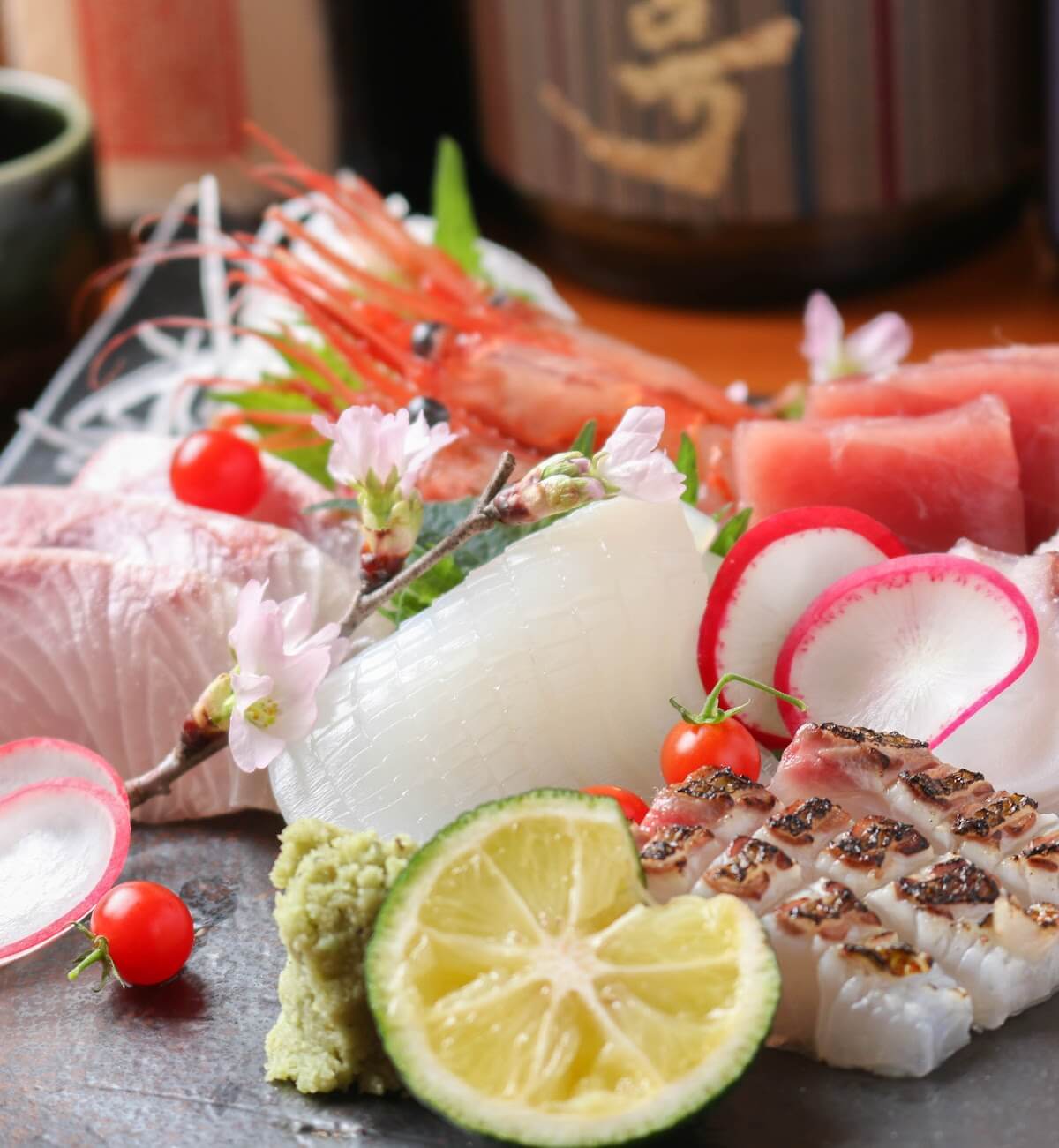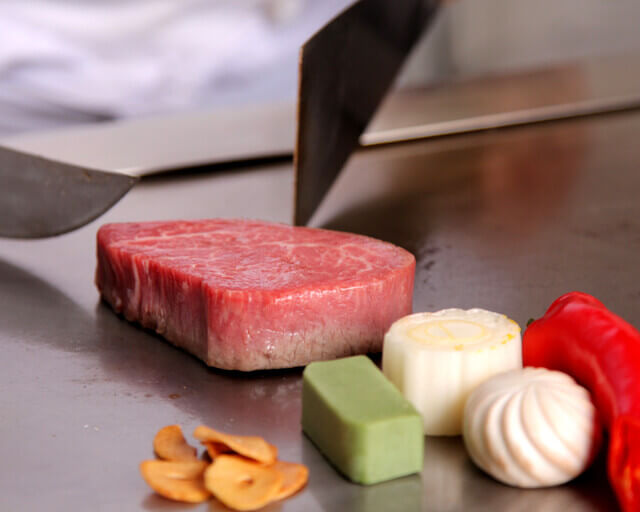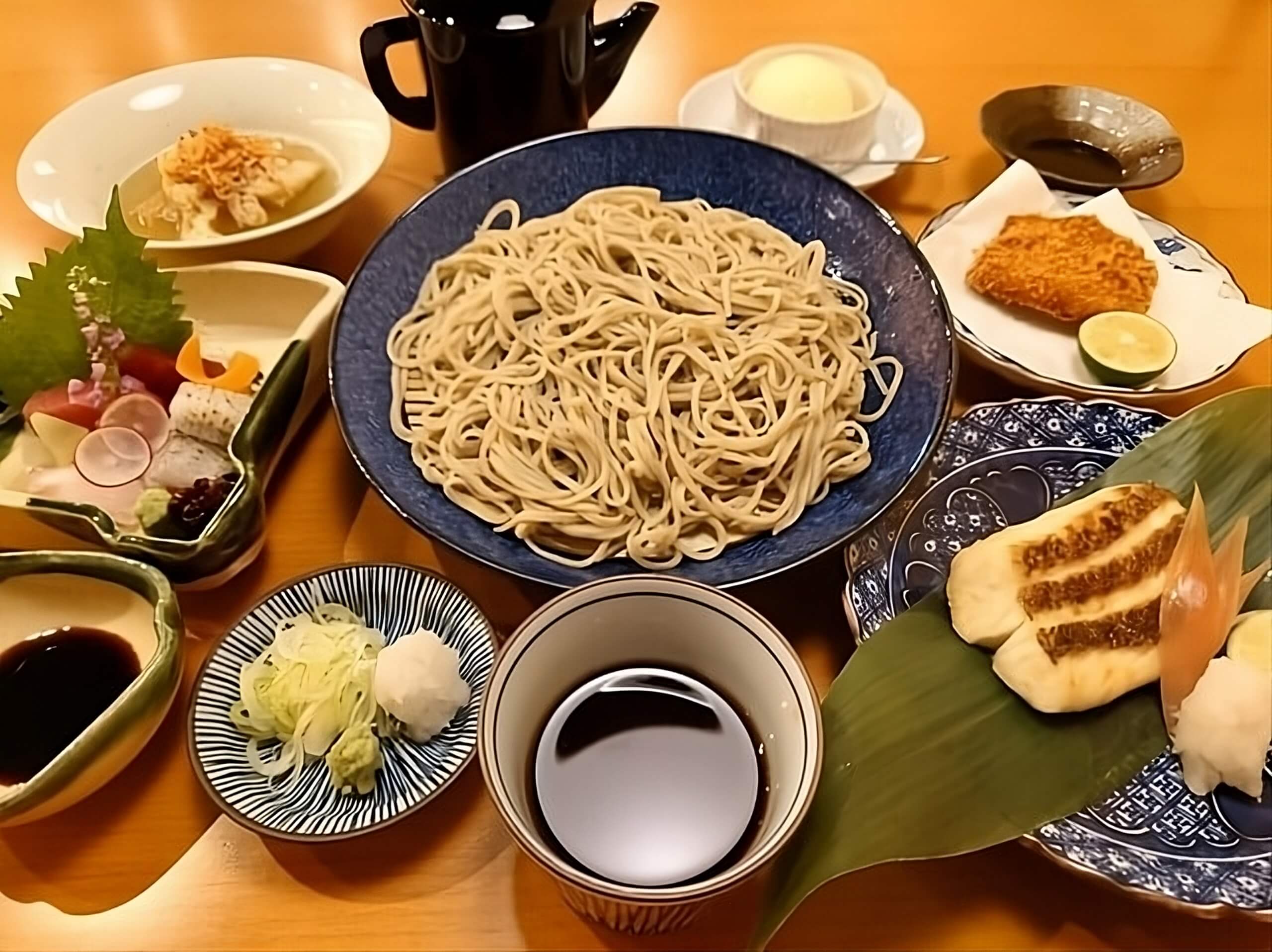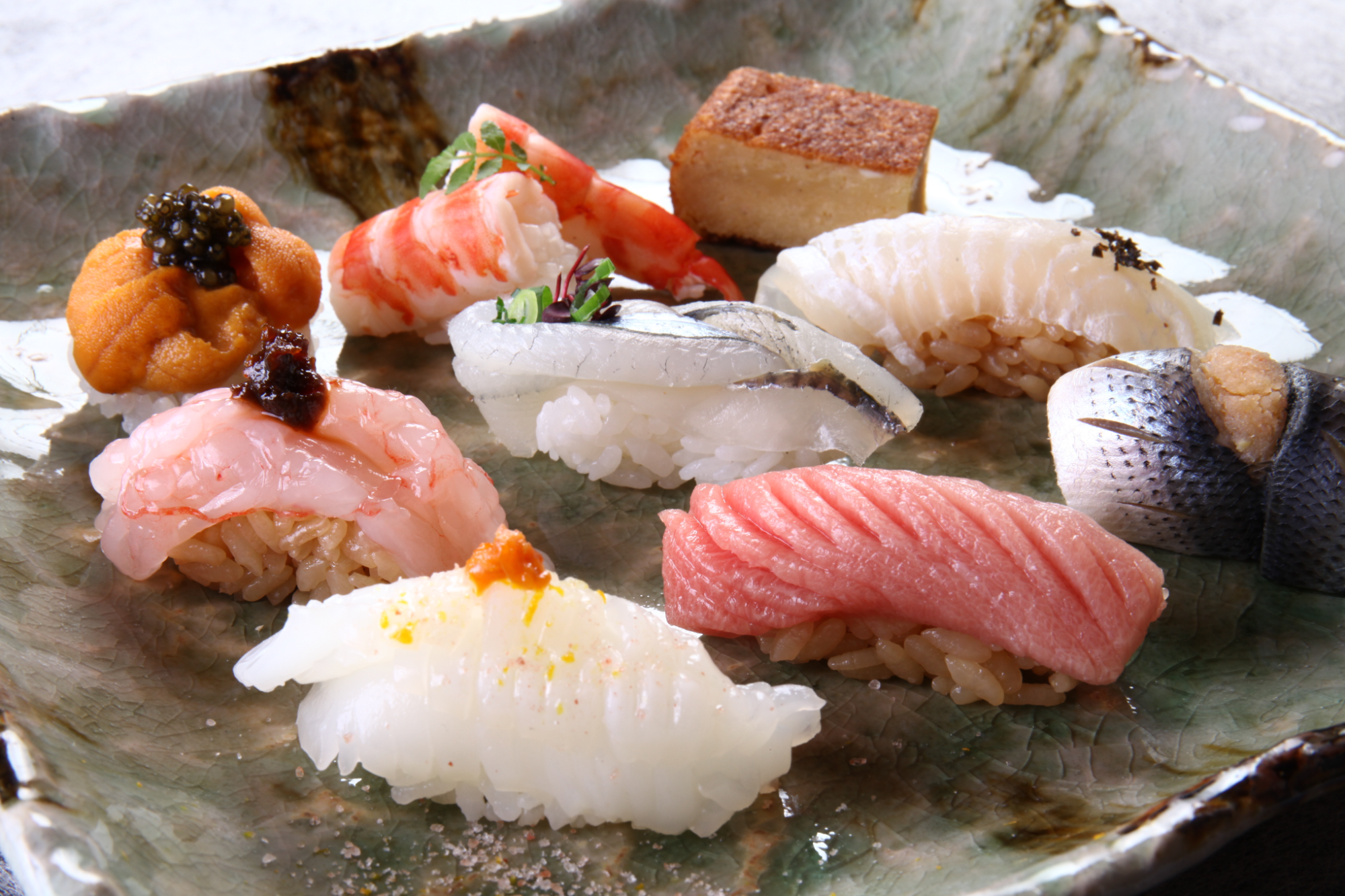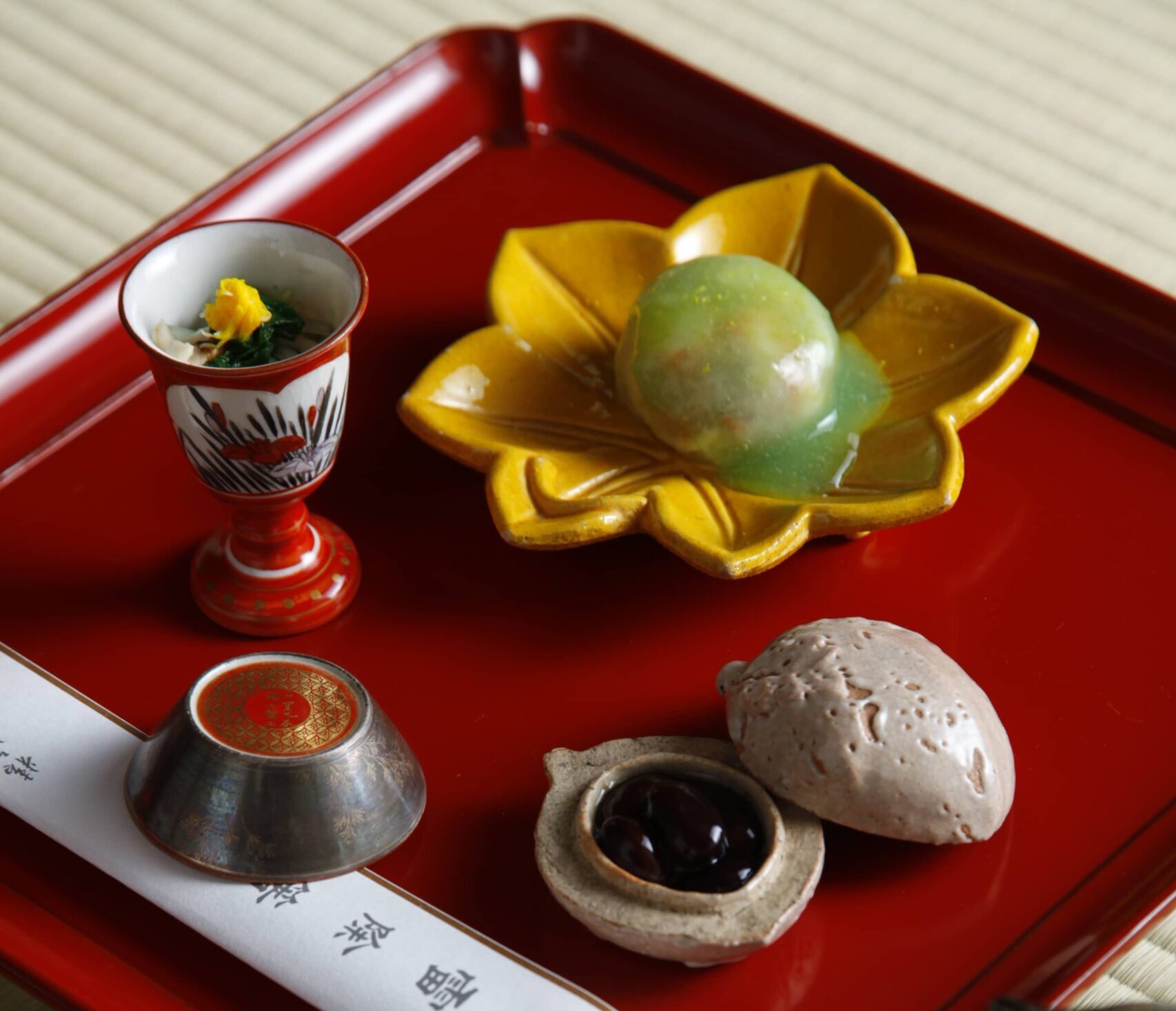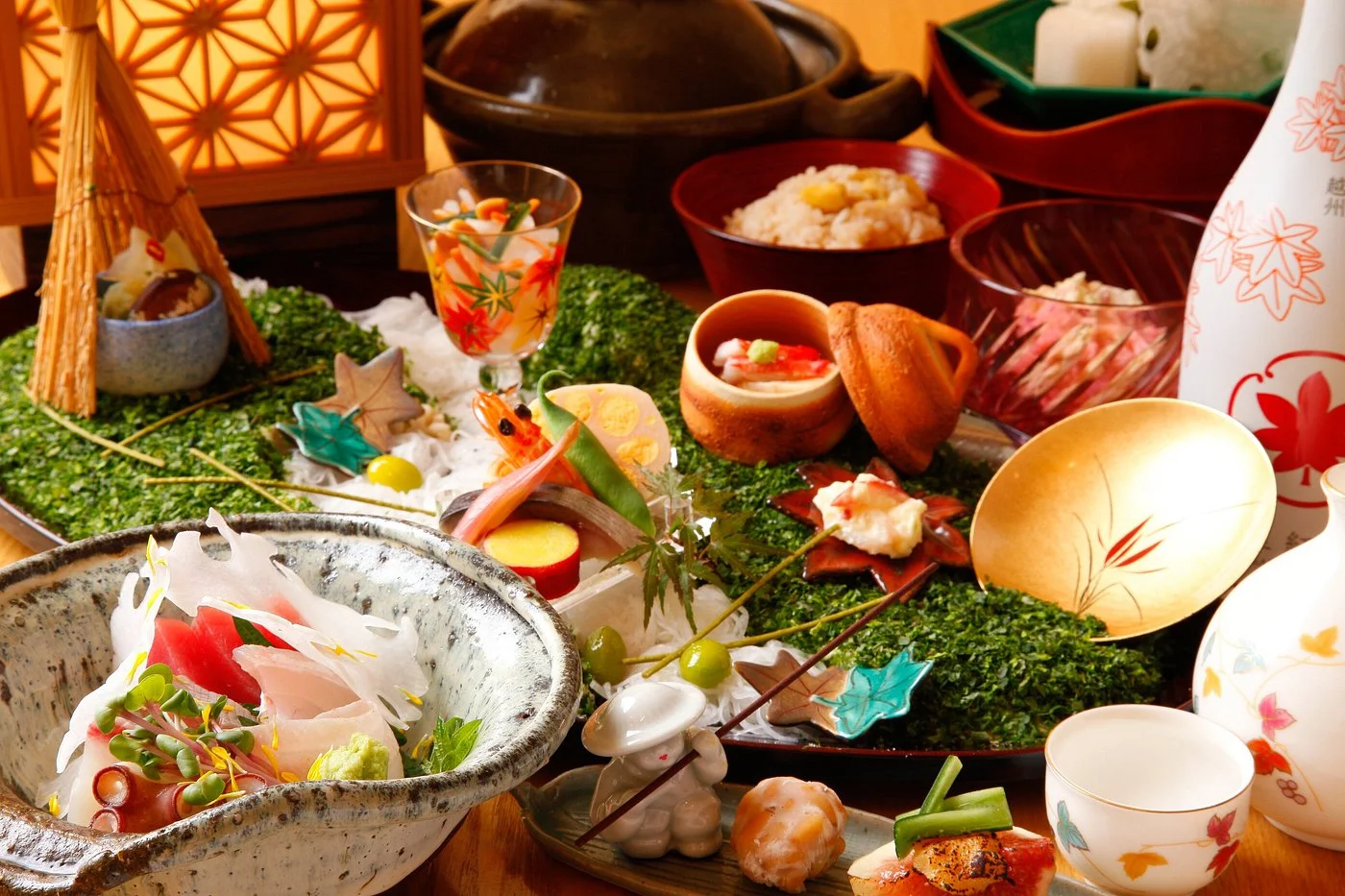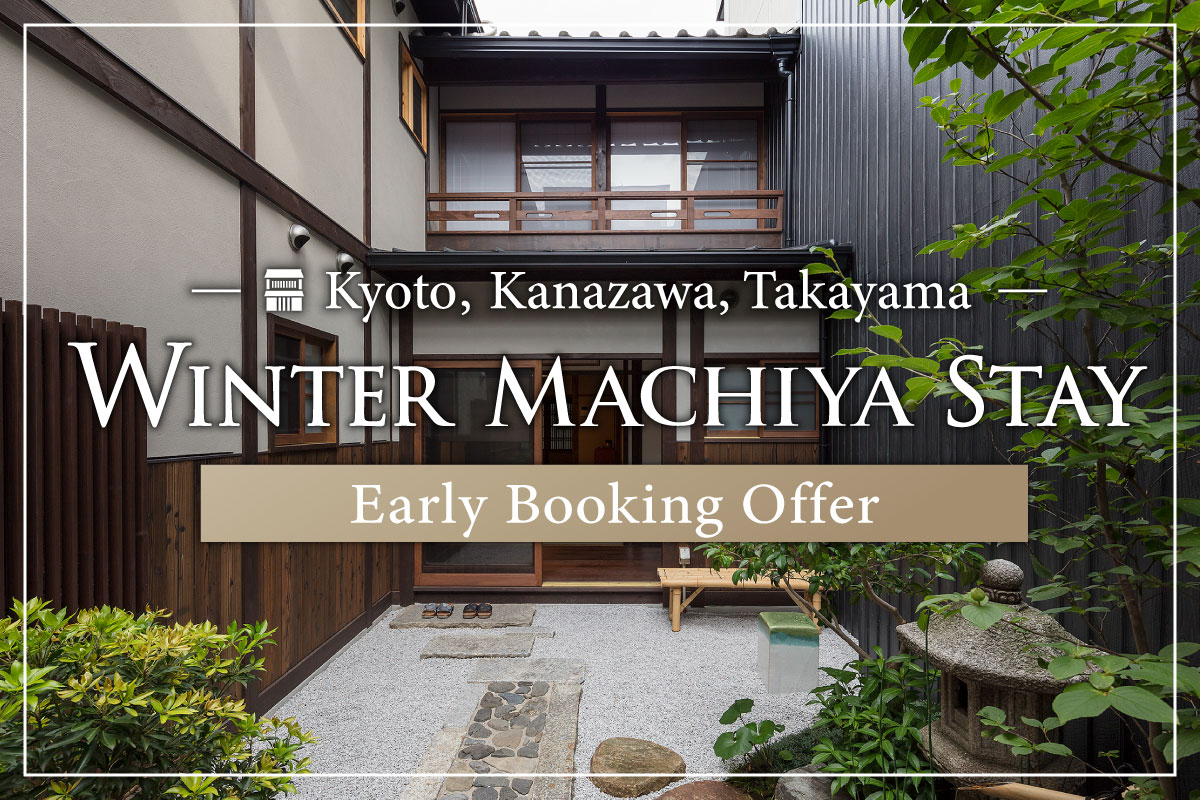Make your visit to Japan truly special with a traditional kaiseki dining experience! In this article, we’ll explore the difference between kaiseki and omakase, and share their cultural and historical roots. We’ve also included top recommendations for the best restaurants in Tokyo and Kyoto for authentic kaiseki meals.
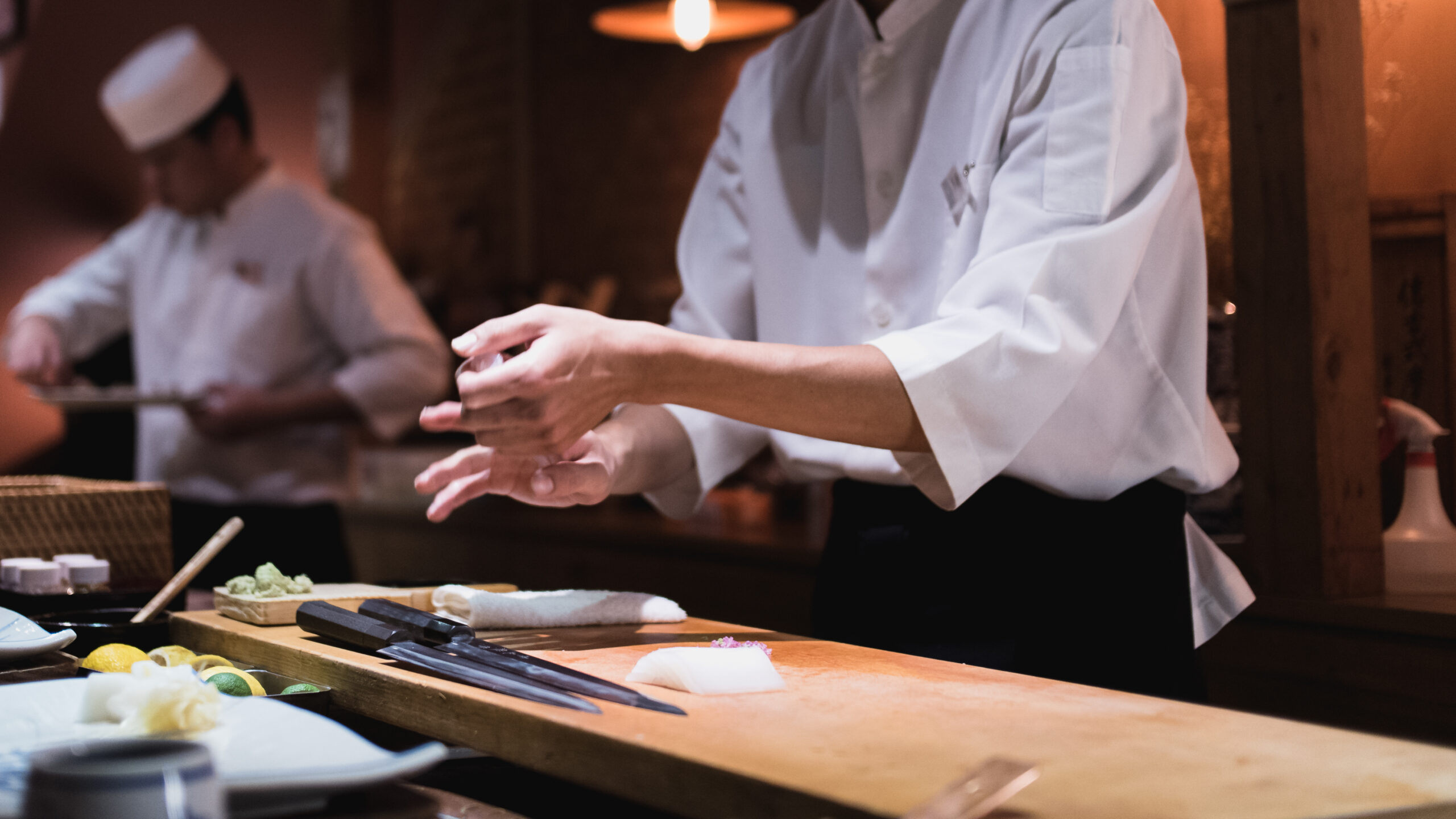
While kaiseki and omakase are both refined ways to enjoy Japanese cuisine, they refer to different things. Kaiseki is a style of traditional Japanese multi-course dining that focuses on seasonality and presentation. Omakase is a style of ordering food, where the customer leaves the food selection to the chef. We’ll explain more below:
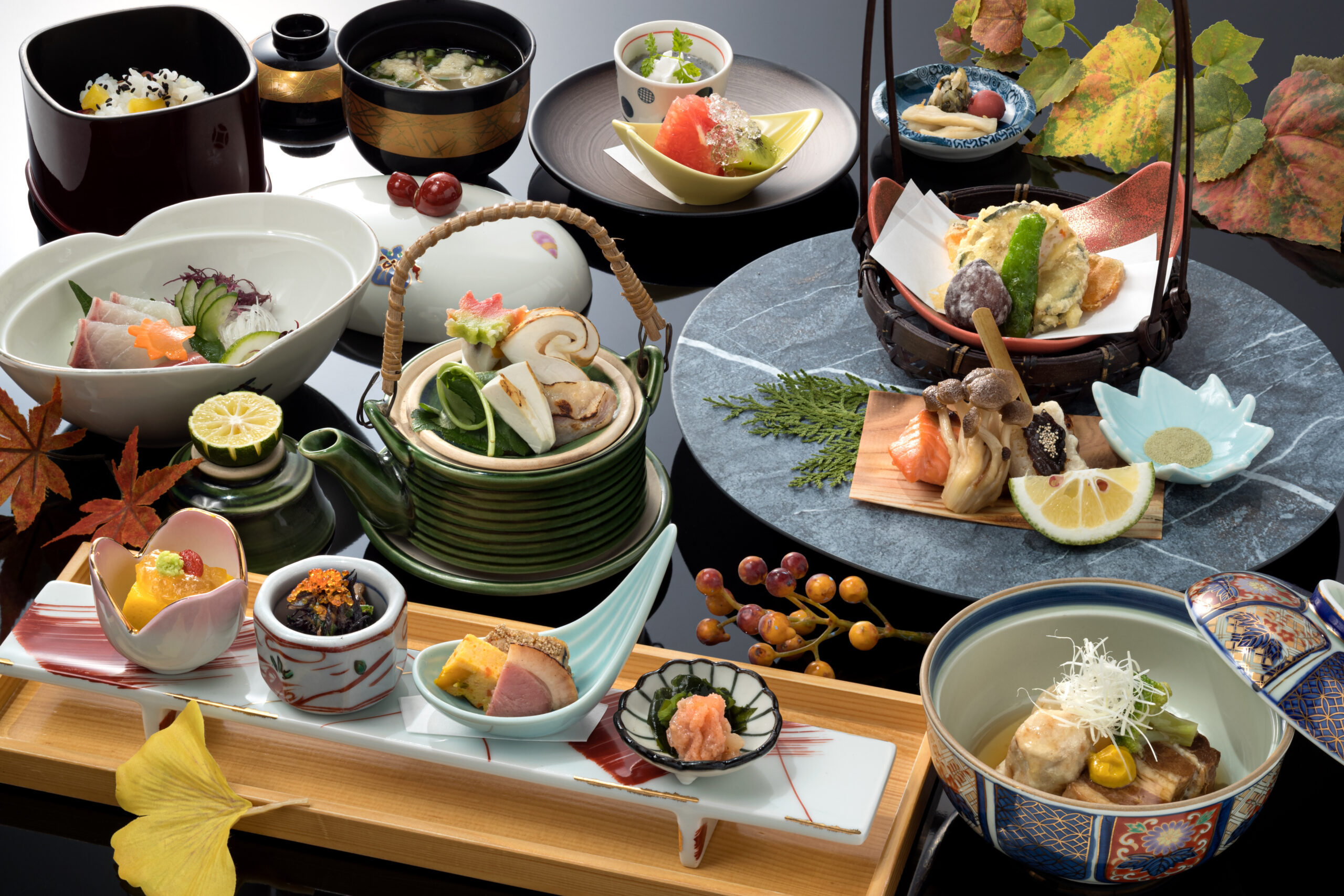
Kaiseki is a style of Japanese cuisine with historical roots in Japan’s traditional tea ceremony. These days, when someone mentions kaiseki, it usually refers to a traditional multi-course meal.
The tradition of kaiseki developed in the late 1500s, when tea master Sen no Rikyu formalized it as a light meal served to guests before chanoyu (tea ceremony). Each dish emphasizes the season’s peak ingredients, a delicate balance of flavors, and visual presentation meant to evoke a sense of peace.
The foundational concept is often described as “ichiju-sansai” (一汁三菜), meaning one soup and three side dishes alongside rice. However, a full modern kaiseki meal is more elaborate and typically consists of about 6 to 10 courses. Chefs prepare dishes using seasonal ingredients at their freshest to enhance a sense of harmony with the season itself.
Each visit to a kaiseki restaurant can offer a different menu depending on the time of year and the chef’s interpretation, making it a unique Japanese dining experience every time.
The direct translation of omakase (お任せ) is “I leave it up to you,” or can be thought of as “Please surprise me.” It refers to a style of ordering in Japanese cuisine where diners entrust the chef to select and prepare dishes based on the freshest ingredients available that day. This style highlights the chef’s creativity, skill, and a more personalized experience.
Is omakase only available at sushi restaurants? No! Omakase is a term that is used in many different genres of traditional Japanese cuisine (washoku).

Although the practice of omakase originated from Edo-period sushi culture, it is still a relatively new dining concept. Popularized in the 1990s, it allowed less experienced diners to enjoy seasonal fish without needing in-depth knowledge. Ordering omakase saves guests from the embarrassment of not knowing what to choose while allowing chefs to showcase ingredients they had on hand for peak freshness.
Travel Tip: Omakase differs from a recommendation! With a recommendation, the chef or restaurant staff help you choose a dish you’ll like. With omakase, the chef will choose a dish for you, something that they enjoy making and want you to try.
Kaiseki meals aren’t limited to ryokan (traditional Japanese inns) and Michelin-starred restaurants. Throughout Japan, you’ll find many well-established, locally loved restaurants that serve excellent kaiseki cuisine.
Prices for kaiseki meals typically range from mid-range to high-end, giving you options to suit different budgets. When choosing a restaurant, we recommend considering the atmosphere and seasonal ingredients rather than focusing solely on ratings or prestige. Since kaiseki is a multi-course dining experience that requires extensive preparation, reservations are almost always necessary—often well in advance.
While Tokyo may have a reputation for serving kaiseki primarily in upscale districts like Ginza and Roppongi, you’ll find kaiseki establishments at various price points throughout the city. From Asakusa to Ueno, Shibuya, and beyond, Tokyo offers excellent kaiseki restaurants that won’t break the bank.
We recommend the 9-course kaiseki meal featuring wagyu steak, tempura, and fresh sushi with fish from Sanriku coast. Choose between a private room with table and chairs, or counter seats to watch the chefs work!
Book Now: 9-Course Kaiseki featuring Wagyu Steak and Sushi
Cost: 12,000 yen/person (service charge & tax included)
Address: 1 Chome-2-17 Yanaka, Taito City, Tokyo
Located in a quiet neighborhood, Tempura Fukutaro is a great place to unwind and enjoy an incredible 7-course kaiseki meal featuring freshly made tempura. Their dishes feature fresh fish from Toyosu Fish Market and seasonal vegetables from partnering farms for an authentic, local dining experience.
Book Now: 7-Course Tempura Kaiseki
Cost: 12,000 yen/person (service charge & tax included)
Address: TK Building 1F, 7-2-16 Ueno, Taito-ku, Tokyo
One of the best Tokyo restaurant for sushi lovers, with a 6-course omakase sushi course with sake pairings to highlight the fresh, seasonal ingredients of each dish. You’re in good hands here, as Sushidokoro Sen’s chef specializes in traditional Edomae sushi preparation and has over 15 years of experience!
Book Now: 6-Course Sushi Kaiseki with Sake Pairing
Cost: 26,400 yen/person (service charge & tax included)
Address: 1F AT Building, 3-42-7 Yushima, Bunkyo-ku, Tokyo, Japan
As the historical capital of Japan, Kyoto City influenced and popularized many food trends over the years. The city is full of restaurants and chefs who pride themselves on preserving traditional foods and cooking techniques while making them accessible to modern diners.
Simplicity is elevated at Yugyoan Tankuma, where every ingredient is sourced locally. Everything from the seafood, vegetables, meat, rice, and sake are Kyoto-made where possible. Here, the chefs prioritize seasonality, and each dish is prepared without extra flourishes to allow the individual flavors of the ingredients to shine. Conversation between the chefs and guests is welcomed for an intimate dining experience.
Note: Ingredients and preparation can’t be changed to accommodate allergies or dietary restrictions.
Book Now: 6-Course Sukiyaki with Wagyu Sushi Kaiseki Dinner
Cost: 15,400 yen/person (service charge & tax included)
Address: 325 Kamiyanagicho Shimogyo Kyoto
If you’re in Kyoto, we recommend trying this 7-course, Kyoto-style kaiseki dinner featuring crispy tempura, fresh sashimi, soups, rice, and more—all made with fresh, seasonal ingredients. Even the dashi (soup broth) is locally sourced and fresh groundwater is collected each morning for the day’s menu!
Book Now: 7-Course Kyoto Kaiseki Dinner
Cost: 20,700 yen/person (service charge & tax included)
Address: 565-2 Kawaracho, Nakagyo Ward, Kyoto
We recommend you arrive hungry! The 6-course kaiseki meal features premium Kobe beef sukiyaki, wagyu sushi, and perfectly bouncy udon noodles and vegetables served hot pot-style. If you’re visiting Japan in late fall or winter, this is a great way to warm up after a long, exciting day exploring Kyoto City.
Book Now: 6-Course Sukiyaki with Wagyu Sushi Kaiseki Dinner
Cost: 15,400 yen/person (service charge & tax included)
Address: 325 Kamiyanagicho Shimogyo Kyoto
Whether you are drawn to the chef led spontaneity of omakase or the seasonal elegance of kaiseki, the next step is choosing the right restaurant for your trip.
Visit the MACHIYA LOCALS website and search for more restaurants by city! Currently, there are kaiseki restaurant recommendations for Kyoto, Tokyo, Kanazawa, and Takayama. Each restaurant has a comprehensive guide in English with info like opening hours, costs, menu guides, and available seating options. It is a reliable starting point for planning a dining experience that fits your preferences.
Most importantly, you can check vital details such as the availability of children’s menus, whether the restaurant can accommodate dietary restrictions and allergies, and more.
・Japan Travel Tips: Advice Before Traveling to Japan
・How to Shop Tax-Free in Japan
・Japan Travel Tips: Internet Access While Traveling in Japan
・Tips for Money in Japan and Currency Exchange Options
Make your trip a truly local experience, and go where the locals go. If you're wondering where the locals go to eat when hanging out with family, celebrating with friends, stopping by for an after work drink... look no further.
Machiya Locals Website

